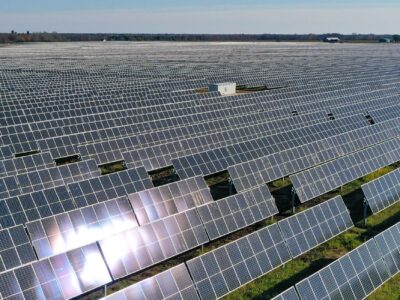The Vineyard Golf Club’s (VGC) course has been hailed as the “only truly organic course”
in America. The idea to go organic was basically mandated by the Martha Vineyard County Commission as a condition for the course to be built. Because the course’s location was over the island’s sole water source, the commission feared that synthetic pesticides and other chemical-based materials would pollute their drinking water.
In the early 2000s, organic golf course operations were more of a dream; however, the VGC committed to making it a reality. Despite many doubters, accomplishing this feat took a comprehensive, innovative approach.
“When we started here, some of my peers thought this golf course would be a dust bowl,” Jeff Carlson, the course’s first superintendent, told the New York Times in 2010. “People said we were crazy.”
Sustainability factored into the course’s construction. Non-indigenous trees already located on the land were taken down with native trees planted instead. The chopped-down trees were chipped up, with the wood either being re-purposed on paths or sold on the island.
Composted sewage emission from a local brewery was added to enrich the ground’s root zone soil. For the fairways and greens, VGC picked grasses that provided the most resistance to disease without the need for traditional pesticides.
The greens were also lined with sealed PVC sheets to test for water pollutants, allowing the water to soak out through the fairways or rough turf. The rough area, moreover, was also filled with natural vegetation.

Photo Courtesy Vineyard Golf
Jeff Carlson proved to be a key figure in executing the game plan for the course, which opened in 2002, and turned it into “a petri dish for alternative maintenance techniques.” One early challenge was fungus disease, often caused by leaf wetness. Carlson top-dressed the greens with sand to cut back on dew and used a whip-like device to dry the condensation.
Carlson found innovative, ecologically oriented answers to resolve other operational dilemmas on the course. He used kitchen dish detergent to remove moss and an eco-friendly hot foam product to kill weeds. Another way the club controls weeds is by having visitors clean their golf shoes before playing so that they don’t inadvertently track in weeds.
Carlson took a “Caddyshack”-like approach to tackle the course’s critter problem by hiring a retired Martha’s Vineyard fisherman to rid the grounds of skunks, raccoons, and other creatures. However, instead of the dynamite technique used by Bill Murray’s character, the Vineyard’s local expert merely trapped and removed the intrusive animals.

Photo Courtesy Vineyard Golf
Beetles are a perennial pest at golf courses. Carlson discovered a strategically placed scent could mess up beetles’ mating habits. Grubs (beetle larvae) greatly damage soil, and most fairways rely on synthetic pesticides to remove them. However, Carlson’s organic solution involved nematodes (microscopic worms) that kill the grubs.
The nematodes were effective but could be so difficult to get that they had to be flown in from Iowa. While there are added costs in taking the organic route, Carlson told the New York Times that net operating costs were about the same as synthetic pesticides.
VGC’s current supervisor, Kevin Banks, has sustained and evolved his predecessor’s organic programs. To make the turf hardier and more disease-resistant, Banks and his grounds crew continually feed the turfgrass with nitrogen and water. He has observed that these techniques produce sod that is more robust than newly seeded turf.
The golf club has test plots, so Banks and his staff can experiment with different ways to improve their organic groundskeeping.
Multiple solutions to problems are essential because organic supplies can still be hard to find. As Banks explained in 2018, some products needed to be ordered six months in advance.

Photo Courtesy Vineyard Golf
While winning the county commission’s approval was one thing, the golf club had to win over its membership with its organic idea, too. “We had to promote the notion of playability rather than visual perfection,” Carlson explained to the New York Times, although he also stated that the members have been supportive. Banks has continued to engage the membership by publishing information sheets and a monthly newsletter on his team’s organic endeavors.
The club’s organic philosophy has also extended to the clubhouse. Sustainability measures have included playing water-refill stations throughout the links and removing all plastic from the takeout menu and other places where food is purchased.
The clubhouse kitchens also strive to recycle as much cardboard, glass, and aluminum as possible. Anthony Rabeni, VGC’s executive chef, revealed in 2019 that they have started composting food waste to fertilize the golf courses and the restaurant’s garden.





